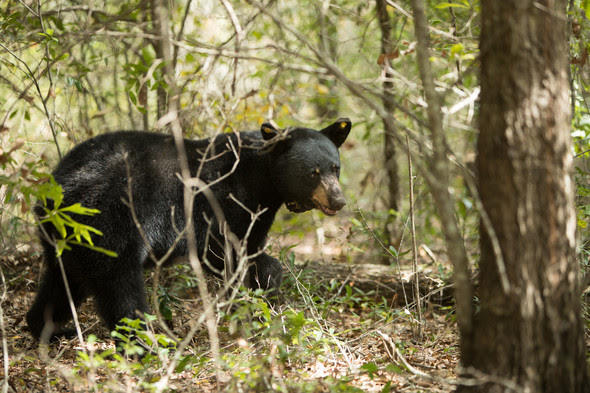 MONTGOMERY-Historically, Alabama’s black bear population only occurred in the southwest portion of the state, primarily in Mobile, Washington and Clarke counties. The bears of this region of the state are of the Florida subspecies, Ursus americanus floridanus, and while in low numbers here, are quite abundant throughout many areas of Florida.
MONTGOMERY-Historically, Alabama’s black bear population only occurred in the southwest portion of the state, primarily in Mobile, Washington and Clarke counties. The bears of this region of the state are of the Florida subspecies, Ursus americanus floridanus, and while in low numbers here, are quite abundant throughout many areas of Florida.
In recent years, black bears have steadily immigrated into northeast Alabama from northwest Georgia, primarily to DeKalb, Cherokee and Etowah counties, and have established a small, but viable population in that region of the state. While these bears look very similar to the Florida bear, they are classified as a different subspecies, the American Black Bear, Ursus americanus americanus. In addition to these core areas, sporadic bear sightings have been documented in other areas throughout the state, which may indicate that Alabama’s black bear populations are slowly increasing.
The Wildlife and Freshwater Fisheries Division is currently working with Auburn University to conduct research on black bears within the state. Data collected will yield information on black bear population size, density, basic demographics, confirmation of the subspecies, and will provide insight on the mechanics of re-colonizing large carnivores. This information will also help with future black bear management practices for our growing population.
For information on bear research or questions about Alabama’s black bear population, contact the Wildlife Section’s Large Carnivore Coordinator:
Thomas Harms
30571 Five Rivers Boulevard
Spanish Fort, AL 36527
251-626-5474
The future of Alabama’s black bears lies with its citizens. It is the responsibility of Alabamians to take proactive measures to avoid creating situations that could encourage bears to become habituated to humans. Bears are attracted to residential areas where easy sources of food are available such as pet food, bird feeders and household garbage. When humans live within bear country, these food sources must be removed to decrease conflicts between people and bears.
 These simple efforts can lead to maintaining bears in their wild state and avoid human/bear conflicts.
These simple efforts can lead to maintaining bears in their wild state and avoid human/bear conflicts.
- Place trash outside on pick-up days, and don’t leave it out overnight
- Remove deer and bird feeders at the first sighting of bear activity.
- Feed pets inside; if pets are fed outside, only feed the amount that will be consumed by your pet in a short time.
- Store grills and smokers inside when not in use to avoid damage to your cooking equipment.
If you see a bear in your area, remain calm and don’t approach the bear. The fact that you have seen a bear doesn’t necessarily represent a problem, it may simply be passing through the area. It will most likely not stick around long if there is no available food source. During the spring and summer months, adult males increase their ranges dramatically in search of receptive females and young subadult bears are dispersing from their mothers territory. These two situations will most likely be responsible for the majority of sightings during this time of the year.
 If you do encounter a bear at close range:
If you do encounter a bear at close range:
- Do not run from the bear but back away slowly.
- Stand tall and upright.
- Avoid direct eye contact.
- Make sure the bear has a free direction to escape.
- Never purposely feed a bear.
Media Release/Alabama Department of Conservation and Natural Resources


